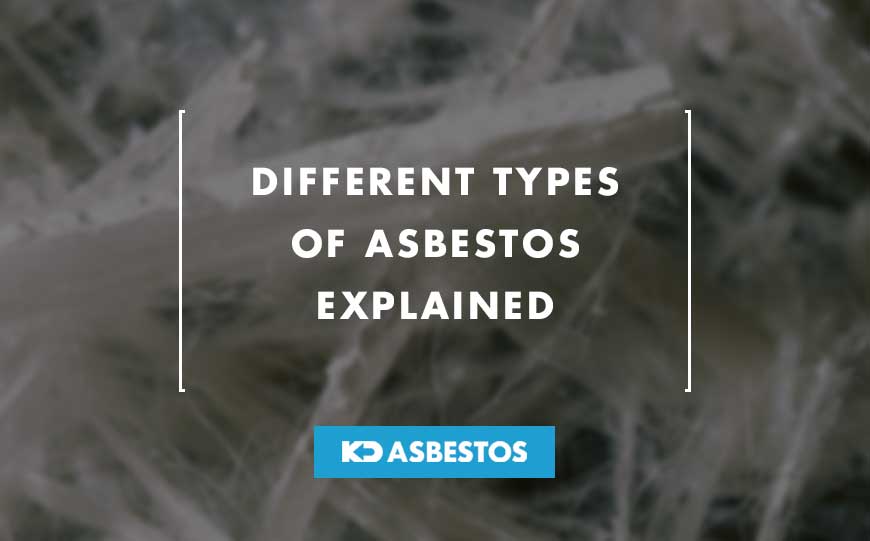
Asbestos, once hailed as a miracle mineral for its remarkable heat resistance and durability, enjoyed widespread use across industries such as construction, manufacturing, and shipbuilding.
However, the discovery of severe health risks associated with asbestos exposure led to a sharp decline in its use.
In this article we will be examining the different types of asbestos and the profound dangers it poses to human health.
Each type of asbestos carries distinct properties that determine its applications and risks.
Understanding how to identify asbestos and what actions to take upon its discovery is crucial for safeguarding health and ensuring proper handling and disposal.
From the dangers of asbestos-related diseases to the essential steps to manage its presence responsibly, this article equips readers with vital knowledge to navigate encounters with asbestos safely and effectively.
Table of Contents
What is Asbestos?
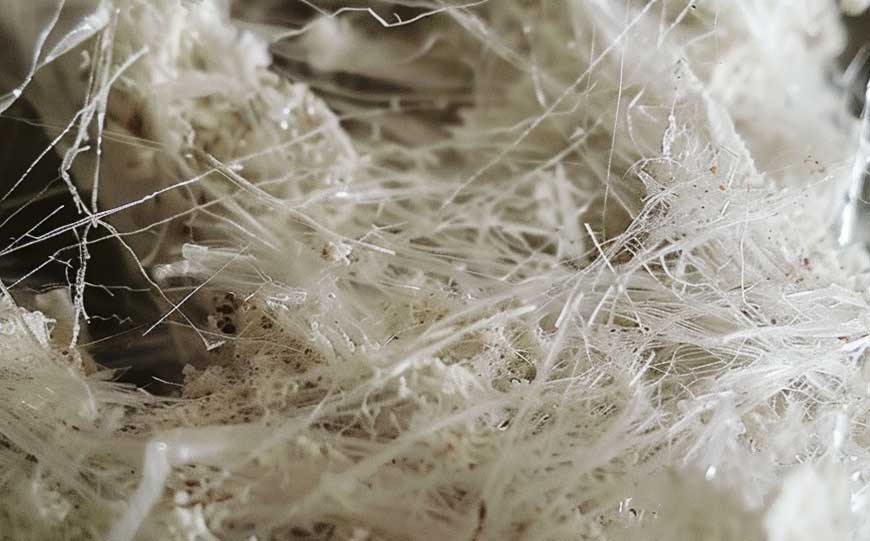
Asbestos is a naturally occurring mineral composed of thin, microscopic asbestos fibres.
It gained popularity due to its exceptional heat resistance, durability, and insulating properties.
These qualities made asbestos a favoured material in various industries, including construction, automotive, shipbuilding, and manufacturing, from the late 19th century through much of the 20th century.
There are several types of asbestos minerals, each with its own physical characteristics and applications.
Asbestos fibres are resistant to heat, fire, and chemicals, making them valuable in applications where these properties are crucial.
They were used extensively in insulation for pipes, boilers, and electrical wiring, as well as in roofing materials, flooring tiles, and automotive parts.
However, despite its useful properties, asbestos poses significant health risks.
Due to these severe health risks, the use of asbestos has declined sharply in many countries.
Regulations now strictly control its use, handling, and disposal. Identifying and safely managing asbestos-containing materials in buildings and products is crucial to prevent exposure and protect public health.
What are the Different Types of Asbestos?
Here’s an in-depth look at the different types of asbestos minerals:
Amosite (Brown Asbestos)
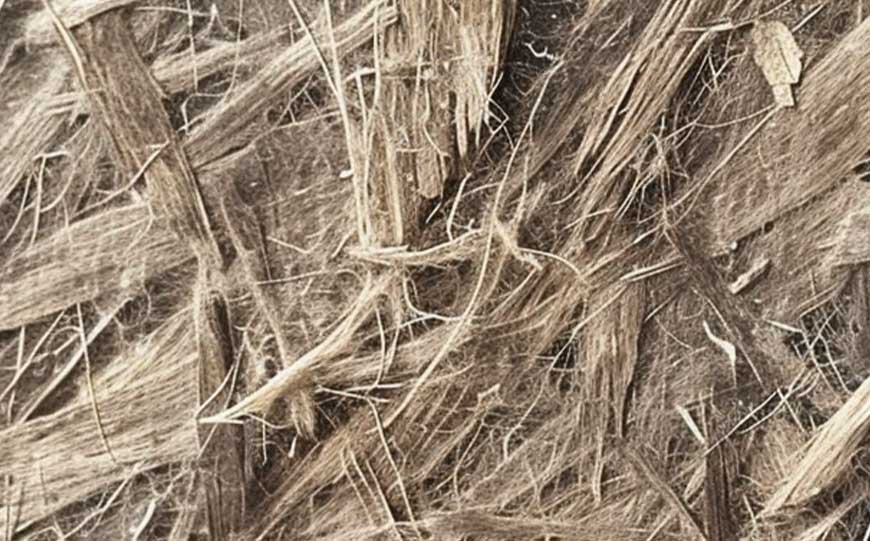
Amosite, also known as brown asbestos, belongs to the amphibole group of asbestos minerals.
It has straight, needle-like fibres that are sharp and brittle.
Amosite was commonly used in insulation and building materials, including cement sheets, insulation boards, and thermal insulation for pipes and boilers.
Its heat resistance and durability made it suitable for high-temperature applications.
The sharp and brittle nature of Amosite fibres made them effective at reinforcing materials.
However, these same characteristics also increase their health risks when airborne, as they can penetrate deep into lung tissues if inhaled.
Chrysotile (White Asbestos)

Chrysotile, or white asbestos, is the most common type of asbestos and belongs to the serpentine group.
It is characterised by curly, flexible fibres.
Chrysotile was widely used in a variety of products, including roofing materials, ceiling and floor tiles, insulation, brake pads, and textiles.
Its flexibility allowed it to be easily incorporated into different materials.
Unlike other types of asbestos, Chrysotile fibres are curly and pliable, making them easier to spin into yarns and fabrics.
This characteristic also affects their behaviour when disturbed, influencing the ease of exposure and inhalation risks.
Crocidolite (Blue Asbestos)
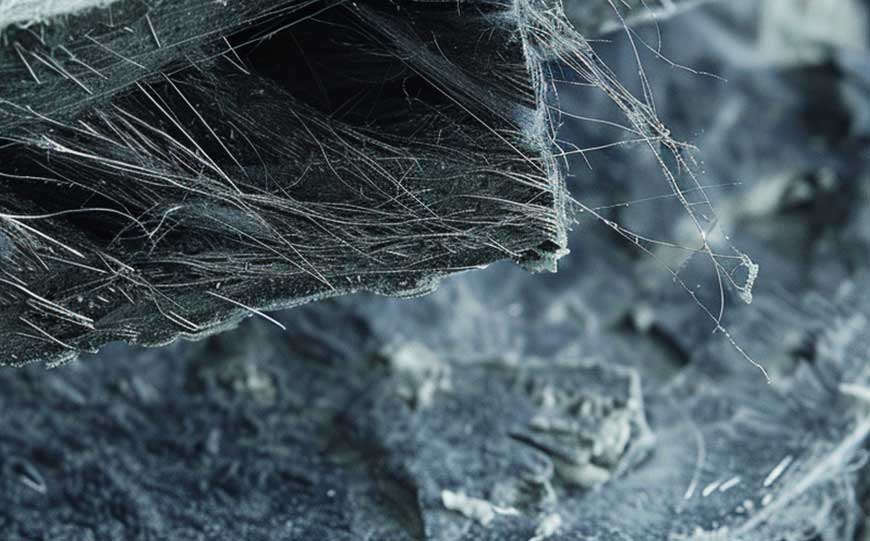
Crocidolite, or blue asbestos, is an amphibole asbestos known for its fine, straight fibres with a blue-grey colour.
Crocidolite was valued for its high heat resistance and tensile strength, making it suitable for products such as insulation for steam engines, spray-on coatings, and pipe insulation.
The thin and sharp nature of Crocidolite fibres contributed to their strength and resistance to acids.
However, these same characteristics also make them highly hazardous if inhaled, as they can easily penetrate lung tissues and cause severe damage.
Actinolite
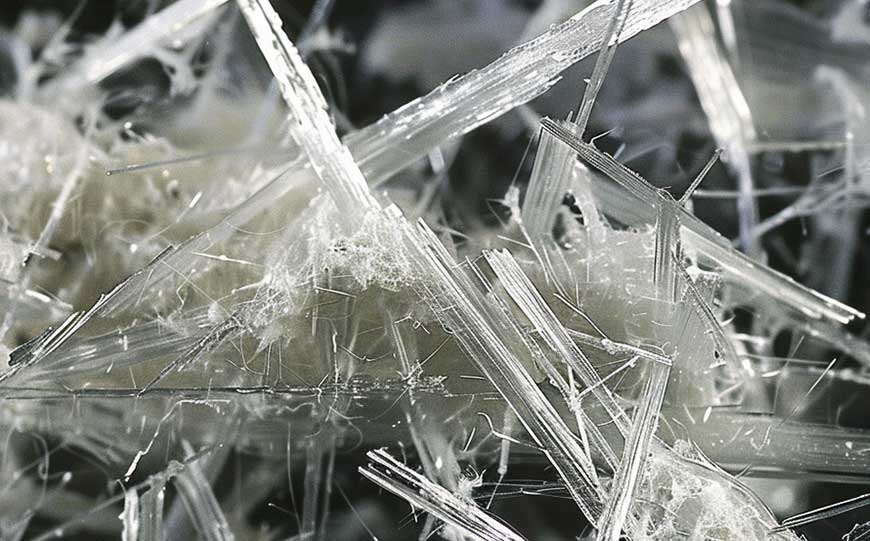
Actinolite is another amphibole asbestos mineral characterised by long, silky fibres.
Actinolite was mainly used in construction materials such as insulation and tiles.
Its fibres are known for their silky appearance and can be intertwined with other minerals.
This characteristic complicates the identification and safe handling of asbestos-containing materials.
Anthophyllite
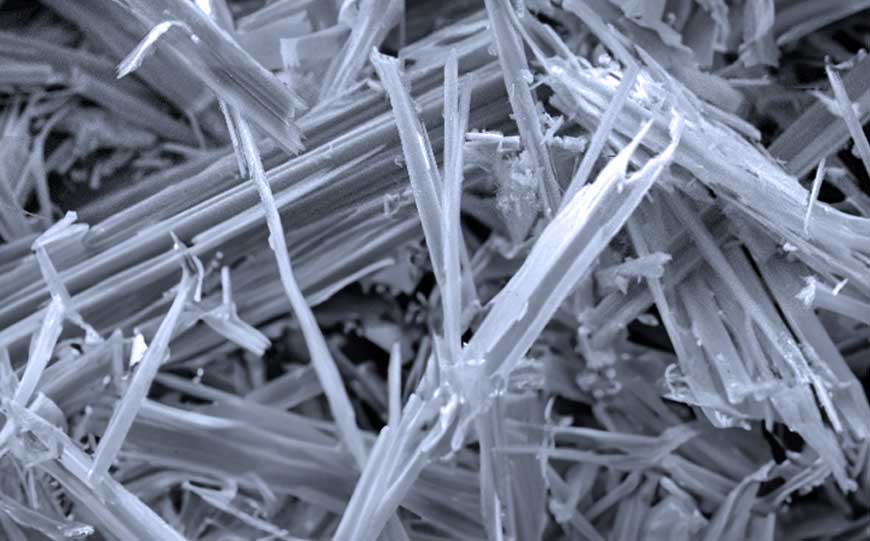
Anthophyllite is a lesser-known asbestos mineral that typically ranges in colour from grey to brown.
It was found in products such as insulation and roofing materials, but its use was limited due to its brittle nature and lower heat resistance compared to other asbestos types.
Anthophyllite fibres have a harsh, needle-like appearance.
Its rarity means it is less frequently encountered in industrial or commercial settings.
Tremolite
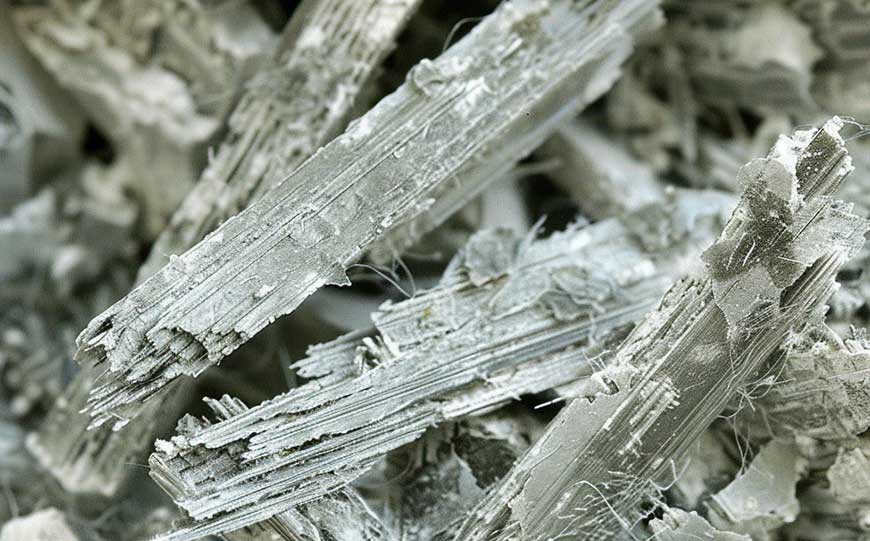
Tremolite is an amphibole asbestos mineral known for its sharp, brittle fibres.
Tremolite was found in various products such as talc and vermiculite.
Its fibres are sharp and brittle, making them easily airborne when disturbed.
Their presence as a contaminant requires careful identification and handling to prevent exposure and health risks.
What are the Dangers of Asbestos?

Asbestos presents severe health risks when its fibres are released into the air and subsequently inhaled or ingested.
Exposure to asbestos can lead to several life-threatening diseases, making it crucial to understand the dangers associated with this mineral.
Respiratory Diseases
Asbestos fibres, when disturbed, become airborne and can be easily inhaled.
These fibres are sharp and durable, allowing them to penetrate deep into lung tissues.
Over time, asbestos exposure can cause respiratory diseases such as:
Asbestosis
Asbestosis is a progressive lung disease characterised by inflammation and scarring of lung tissue, leading to breathing difficulties and often irreversible lung damage.
Lung Cancer
Asbestos exposure increases the risk of developing lung cancer.
The risk is higher for smokers who are also exposed to asbestos fibres.
Mesothelioma
A rare and aggressive cancer that affects the lining of the lungs, abdomen, or heart.
Mesothelioma is almost exclusively caused by asbestos exposure.
Other Cancers
Apart from lung cancer and mesothelioma, asbestos exposure has been linked to an increased risk of other cancers, including cancers of the larynx, ovaries, and kidneys.
Non-Cancerous Effects
In addition to cancers, asbestos exposure can cause non-cancerous health effects such as pleural plaques (thickening and hardening of the membranes around the lungs), pleural effusion (build-up of fluid around the lungs), and benign pleural effusions.
Environmental and Public Health Risks
Asbestos fibres released into the environment can pose risks to public health, especially in communities near asbestos mining or processing facilities.
Improper handling and disposal of asbestos-containing materials can lead to contamination of soil and water sources, further increasing exposure risks.
Long Latency Period
One of the most concerning aspects of asbestos-related diseases is their long latency period.
Diseases like mesothelioma may take 20-50 years or more to develop after initial asbestos exposure.
This prolonged latency period often means that symptoms appear only decades after exposure has occurred, making early detection and prevention challenging.
What Should You Do If you Discover Asbestos?
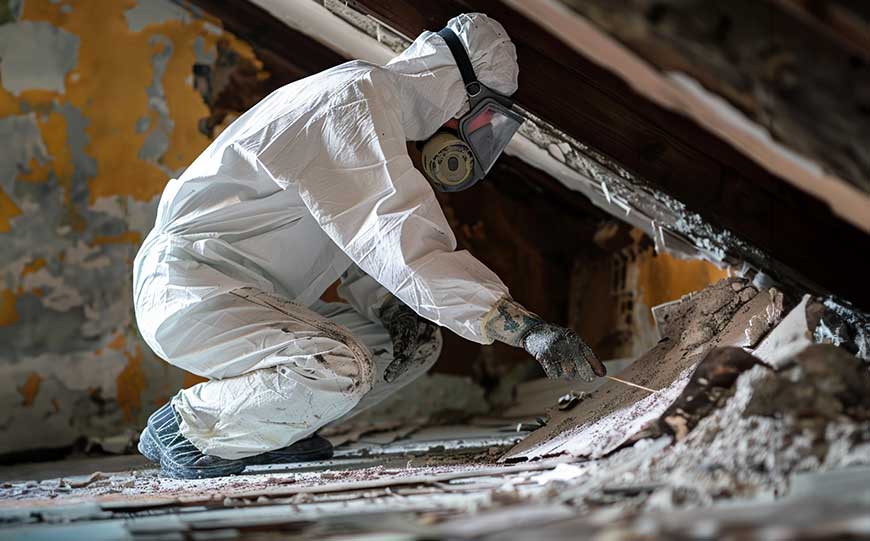
Discovering asbestos in your home or workplace can be concerning due to the associated health risks.
It’s essential to take immediate action to ensure safety and compliance with regulations regarding asbestos management.
Avoid Disturbing the Material
If you suspect or confirm the presence of asbestos-containing materials (ACMs), avoid disturbing them.
Asbestos fibres are most dangerous when they are airborne and can be inhaled.
Disturbing ACMs through cutting, drilling, sanding, or demolition activities can release fibres into the air, increasing the risk of exposure.
Prevent Access to the Area
Limit access to the area where asbestos is present.
If possible, seal off the area and prevent unauthorised entry.
This precaution helps minimise the potential for exposure to asbestos fibres by reducing human traffic and disturbance of the materials.
Contact a Licensed Asbestos Professional
It’s crucial to hire a licensed asbestos professional with expertise in asbestos inspection, testing, and removal, such as us here at KD Asbestos.
These professionals are trained to handle asbestos safely and can conduct thorough assessments to determine the extent of asbestos contamination.
They can also provide advice on proper management or removal strategies based on their findings.
Follow Legal and Safety Guidelines
Follow all legal requirements and safety guidelines for handling asbestos.
Depending on your location, there may be specific regulations governing the management, removal, and disposal of asbestos-containing materials.
Adhering to these regulations ensures compliance and protects both your health and the environment.
Consider Asbestos Removal or Management Options
Based on the assessment conducted by the asbestos professional, you may need to consider options for asbestos removal or management.
In some cases, encapsulation or enclosure of ACMs may be sufficient to prevent fibre release and reduce exposure risks.
In other cases, complete removal of asbestos-containing materials may be necessary to eliminate the hazard.
Educate Occupants and Workers
If asbestos is found in a building or workplace, it’s essential to educate occupants and workers about the presence of asbestos, associated risks, and safety measures in place to prevent exposure.
Clear communication and training on asbestos awareness and handling protocols can help minimise risks and ensure everyone’s safety.
Monitor and Maintain Records
After addressing asbestos issues, maintain records of inspections, testing results, removal activities, and ongoing monitoring efforts.
Regular monitoring of asbestos-containing materials ensures compliance with safety regulations and helps detect any changes or deterioration that may pose new risks over time.
Conclusion
Hopefully you now have an understanding of the many different types of asbestos.
From the sharp, brittle fibres of amosite, to the curly, flexible chrysotile that was prevalent in various building materials, understanding these distinctions is crucial.
Moreover, the dangers of asbestos exposure cannot be overstated.
Respiratory diseases such as asbestosis, lung cancer, and mesothelioma highlight the devastating health consequences linked to asbestos fibres entering the lungs.
The long latency period of these diseases further underscores the importance of proactive management and prevention.
By equipping oneself with knowledge about asbestos types, associated dangers, and proper handling protocols, individuals and communities can effectively mitigate risks and promote safer environments for future generations.
Vigilance and adherence to best practices are key to navigating encounters with asbestos responsibly and protecting public health.
For more information on asbestos, get in contact with us here at KD Asbestos.